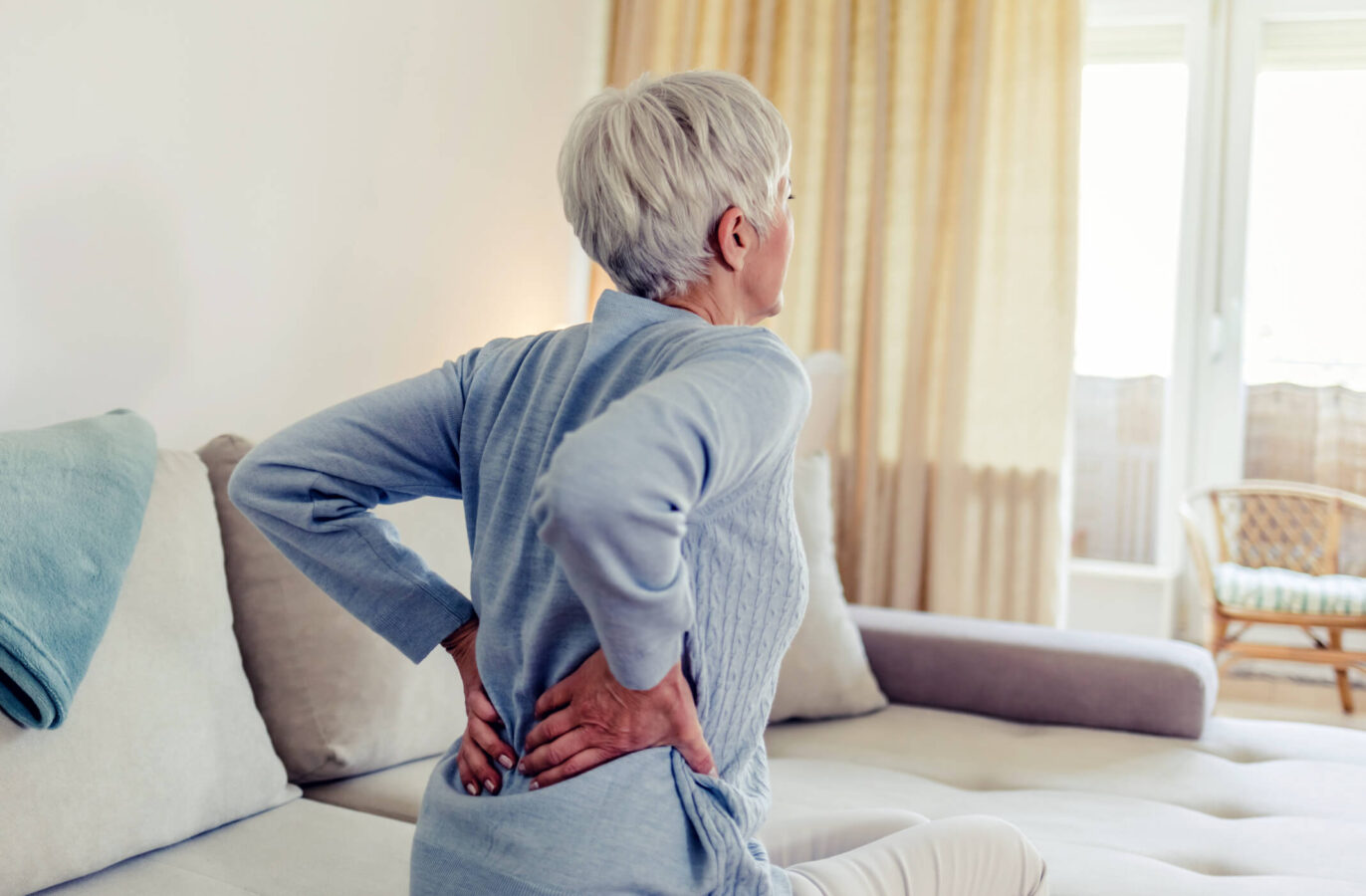
Medically reviewed by Misty Seidenburg
As we age, it is common to experience changes in the spine due to wear and tear. Damage can also occur due to injuries, systemic conditions like arthritis, and genetic factors. As the bony openings within the spine begin to narrow, pressure is exerted on the spinal cord and/or nerve roots within. This is spinal stenosis.
Spinal stenosis is classified in stages based on how far the condition has progressed. In this article, we will focus on the final stages of spinal stenosis and discuss the benefits of physical therapy to alleviate pain and retain function and mobility.
The human spine is comprised of 33 stacked bones, or vertebrae, which form a tunnel called the spinal canal. The spinal canal protects the spinal cord and nerves within that carry messages between the muscles and the brain.
As the spaces inside the spine become smaller, the spinal cord and nerves can become compressed. This narrowing of the spine happens gradually over time and most often affects the cervical spine located at the neck, and the lumbar spine located at the lower back.
At its early onset, spinal stenosis typically has no symptoms and some individuals can remain symptom-free for years. It often depends on the location and extent of the spinal changes. Healthcare providers use a spinal stenosis grading system to assess the progression of the condition.
Grade 1 stenosis is considered mild. In the early stages of spinal stenosis, the patient may not even realize spinal changes have occurred, and they may not be officially diagnosed with the condition.
As spinal stenosis progresses over time, the spinal canal space narrows and the nerves can start to become compressed. This is Grade 2 stenosis. Patients may experience symptoms at this point as the nerves don’t have as much room to move..
Grade 3 is severe spinal stenosis. This is when the spinal canal is severely restricted and the nerves have very little room to move. Symptoms are more often correlated with this degree of stenosis.
However, symptoms due to spinal stenosis are highly variable. The correlation of stenosis seen on MRI and symptoms is considered controversial meaning while many patients with ‘severe’ spinal stenosis have symptoms, there are also patients with the same degree of damage seen on MRI but without symptoms.
Symptoms vary depending on where in the spine compression occurs: the neck (cervical stenosis), the middle back (thoracic stenosis), or the lower back (lumbar stenosis). With lumber spinal stenosis, the lower body is affected.
Typical symptoms include low back pain, leg pain, or a feeling of heaviness known as claudication. Numbness, tingling, or weakness in the legs and feet are possible. Some patients with more severe symptoms also have bladder and/or bowel problems.
Cervical stenosis and thoracic stenosis symptoms occur in the upper half of the body. They include neck and upper back pain, hand and/or arm numbness or tingling, and balance problems. Diminished bowel and bladder control are possible as well.
Important: If you are experiencing bowel or bladder problems related to your back pain or progressive leg weakness, it’s recommended to see your physician immediately.
For most patients, the symptoms associated with spinal stenosis can be managed with conservative and noninvasive treatments. Light physical exercise is the number one recommendation to manage symptoms.
On occasion, medication can be used to help reduce pain. Neck and back braces can be temporarily used to reduce movement of the spine and prevent movements that trigger pain. Steroid injections may also reduce pain and inflammation in the areas surrounding the compressed nerves.
Yes. In fact, less than 10 % of patients with a spinal disorder need surgery. Physical therapy is a viable treatment option for many people living with severe spinal stenosis. In physical therapy for spinal stenosis, your therapist prescribes targeted exercises to build core strength and increase flexibility in the spine.
Several treatments are shown to help patients manage pain without medication or surgery including dry needling, the McKenzie Method, and manual therapy. Pain relief is an important reason for managing stenosis with physical therapy—but it’s not the only reason.
Spinal changes can impact your posture and balance, increasing your risk of falls and other injuries. Physical therapy combats these with exercise, balance training, and other techniques to improve your overall stability and prevent falls. We are committed to helping you stay active, independent, and confident as you perform everyday tasks.
Keep in mind that surgery may be recommended for some patients with severe spinal stenosis. These procedures typically target and remove bone spurs, and widen the spaces between vertebrae to relieve pressure on the spinal cord and nerves.
Post-surgical physical therapy is effective for regaining strength and mobility and re-learning how to perform daily tasks during your recovery to prevent re-injury.
Persistent back pain and other symptoms should never be dismissed. Discuss your concerns with your healthcare provider to diagnose your condition and determine the best course of treatment for you.
Find a physical therapy clinic near you to schedule a screening and learn how a “movement expert” can make a difference for you.